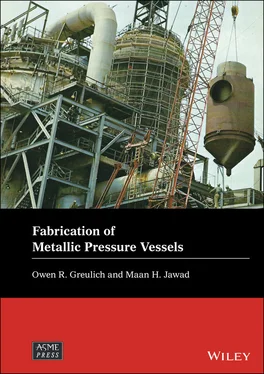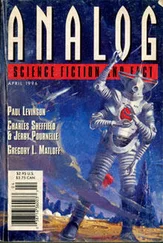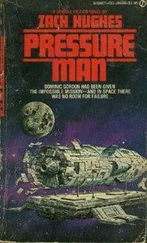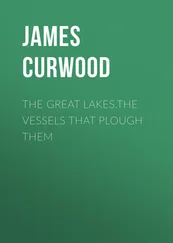Maan H. Jawad - Fabrication of Metallic Pressure Vessels
Здесь есть возможность читать онлайн «Maan H. Jawad - Fabrication of Metallic Pressure Vessels» — ознакомительный отрывок электронной книги совершенно бесплатно, а после прочтения отрывка купить полную версию. В некоторых случаях можно слушать аудио, скачать через торрент в формате fb2 и присутствует краткое содержание. Жанр: unrecognised, на английском языке. Описание произведения, (предисловие) а так же отзывы посетителей доступны на портале библиотеки ЛибКат.
- Название:Fabrication of Metallic Pressure Vessels
- Автор:
- Жанр:
- Год:неизвестен
- ISBN:нет данных
- Рейтинг книги:4 / 5. Голосов: 1
-
Избранное:Добавить в избранное
- Отзывы:
-
Ваша оценка:
- 80
- 1
- 2
- 3
- 4
- 5
Fabrication of Metallic Pressure Vessels: краткое содержание, описание и аннотация
Предлагаем к чтению аннотацию, описание, краткое содержание или предисловие (зависит от того, что написал сам автор книги «Fabrication of Metallic Pressure Vessels»). Если вы не нашли необходимую информацию о книге — напишите в комментариях, мы постараемся отыскать её.
A comprehensive guide to processes and topics in pressure vessel fabrication Fabrication of Metallic Pressure Vessels
Fabrication of Metallic Pressure Vessels
Fabrication of Metallic Pressure Vessels — читать онлайн ознакомительный отрывок
Ниже представлен текст книги, разбитый по страницам. Система сохранения места последней прочитанной страницы, позволяет с удобством читать онлайн бесплатно книгу «Fabrication of Metallic Pressure Vessels», без необходимости каждый раз заново искать на чём Вы остановились. Поставьте закладку, и сможете в любой момент перейти на страницу, на которой закончили чтение.
Интервал:
Закладка:
Additionally, this is when the layout department is likely to become involved. The layout department personnel have a thorough understanding of geometry, trigonometry, fabrication, and some of the behavioral characteristics of materials while they are being fabricated. They are trained in how to lay out intersections of such items as pipe or cone sections with heads or shells. The layout department will plan for efficient use of materials, produce detailed layouts for the heads and shell sections, mark locations and contour cutouts for nozzle installations, etc. The first part of this effort takes place in the flat, when shell sizes and weld bevels are prepared. Other parts occur throughout fabrication. Shell layout will include allowance for weld shrinkage.
As the material arrives, it will go through a receiving inspection and be checked for compliance with specifications, with material mill test reports and other documentation placed in the quality assurance file. Early arrivals are often stockpiled but segregated from non‐code materials that have not gone through quality assurance acceptance until enough components are available to begin work and continue through the flow without unnecessary starts and stops. Even if shell plates are available from stock, it is usual to postpone cutting them until the heads arrive so that actual head dimensions can be measured, or to request a “taping” (a measurement of the circumference) from the head manufacturer prior to shipping. This allows the shell diameter to be adjusted if needed, from its nominal dimension to permit an optimal fit to the heads. This slight adjustment to the shell circumference is often necessary since it is difficult to bring the head circumference to a precise dimension during forming due to the three‐dimensional nature of the head. The difference is usually fairly insignificant, but even an eighth of an inch (3.2 mm) of diameter can make fit up and welding more, or less, efficient.
The shell sections are rolled subsequent to cutting to size and beveling for welds. Their longitudinal joints (straight seams) will be tacked into alignment, and then welded. The heat and stresses of welding will cause a certain amount of shrinkage and distortion. This may be, to some extent, controlled by alternating weld passes on the inside and outside of the weld. However, if distortion is excessive after welding, the shells will be reworked with hydraulic rams or will be re‐rolled to bring them back within tolerance. Working from the zero point on each shell course, nozzles and other appurtenances will be laid out full scale on the plates, with indications as to weld preps as needed.
The fitter assembles the shell courses, referred to as “courses” or “cans,” to each other and to the heads. Circumferential shell welds are usually welded on positioning rolls to allow welding to be performed in the flat position, which is the preferred position because it is the easiest orientation for producing high volumes of high‐quality weld. Next, nozzles will be fabricated, and reinforcing pads laid out, cut, and formed, then fit in place and welded, either preceded or followed by fitting and welding of supports.
Note that while this description looks simple, the work involves a high level of training and skill on the part of the layer out, fitter, and welder. The fitter has the job of fitting and tacking together the assembly within fairly tight tolerances and the welder must be able to produce hundreds of feet of weld with the least amount of rejectable indications.
Nozzles, for example, must be laid out and then fit accurately in the holes cut in the shell sections, correctly oriented, with the proper projection, and with bolt patterns on the flanges in the correct orientation. This is essential in order they fit correctly with piping that may already exist in the field or that may be assembled elsewhere. The fitter will typically install “spiders” and other braces to minimize distortion such as shells going out of round or nozzles sinking excessively during welding. The welder also has a part, controlling his welding within the parameters of the Welding Procedure Specification, in accordance with which he has already demonstrated the ability to produce top quality welds. The welder also maintains preheat and interpass temperatures and speed of progression, and makes in process adjustments as his experience dictates to maximize productivity, avoid weld defects, and control distortion.
After welding is completed, the welds will be inspected. Common inspection methods include the following:
1 Visual.
2 Magnetic particle for ferromagnetic materials such as steel.
3 Dye penetrant for either magnetic or nonmagnetic materials.
4 Dimensional inspections.
5 Radiography.
6 Ultrasonic examination.
It is usual to do these inspections before any required post weld heat treatment (PWHT), even if they are required after PWHT as well, so that any needed repairs can be completed prior to final heat treatment. This is because repair of a defect found after PWHT will normally require repair and an additional heat treatment. Such additional heat treatment can be costly as well as have the potential to reduce material mechanical properties.
After PWHT and required final NDE, any final machining that is needed takes place. Intermediate machining processes may already have taken place if thick welds require J‐grooves or if unique machining is required because of special configurations. Also, for vessels such as heat exchangers requiring tubesheets or other special components, machining of these tubesheets and components is accomplished in parallel with other work on the vessel.
Next, the vessel will be pressure tested when inspections and NDE demonstrate compliance with all requirements. Pressure testing is done either by a hydrostatic test, which is preferred for safety reasons, or by a pneumatic test. Although failures are not anticipated, access is usually restricted during such tests due to the potentially high levels of stored energy. This is especially true during pneumatic tests, but even though water is considered an incompressible fluid, the energy stored by compression of water or other liquid and any trapped air and the stretch of the metallic shell can result in a significant hazard during such tests.
Once the pressure test is completed and all other quality requirements are verified, the vessel is ready for final cleaning and application of any required paint, conversion finishes, anodizing, or other surface treatments. A name plate describing various vessel parameters is then attached to the vessel, indicating compliance with the applicable code and other requirements.
Finally, with fabrication, inspection, NDE, and testing completion, and coatings applied, the pressure vessel is readied for shipment. Shipment may include low level pressurization with a clean, dry, inert gas, sometimes referred to as “pad pressure.” It is used to ensure that nothing is sucked into the vessel on cold days and to prevent condensation. Shipment also includes blocking or cribbing, special supports, possible packaging, and tie‐down on the truck, railcar or barge for shipping.
Once the product arrives at the customer’s facility, it will often undergo further inspection to ensure that all of the requirements have been met and that there has been no damage during shipping. The Quality Assurance package, when supplied, will be reviewed in detail and placed on file. Only then can the vessel be installed and put into service.
1.3 Cost Considerations
The cost of a pressure vessel is a function of many parameters. In areas where labor is costly, it is often the biggest single factor, but many decisions by both the designer and fabricator influence overall cost. The most effective design from a cost standpoint will be one in which schedule, cost and availability of materials, cost and capability of labor, inspection options, and available equipment and tooling are all considered. In addition, short versus long term product cost considerations may need to be discussed with the customer.
Читать дальшеИнтервал:
Закладка:
Похожие книги на «Fabrication of Metallic Pressure Vessels»
Представляем Вашему вниманию похожие книги на «Fabrication of Metallic Pressure Vessels» списком для выбора. Мы отобрали схожую по названию и смыслу литературу в надежде предоставить читателям больше вариантов отыскать новые, интересные, ещё непрочитанные произведения.
Обсуждение, отзывы о книге «Fabrication of Metallic Pressure Vessels» и просто собственные мнения читателей. Оставьте ваши комментарии, напишите, что Вы думаете о произведении, его смысле или главных героях. Укажите что конкретно понравилось, а что нет, и почему Вы так считаете.











